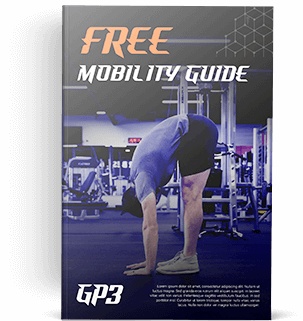Key Points:
- There are multiple facets of athleticism.
- Many sports fans tend to value some components of athleticism, like speed, more highly than others, like endurance.
- The NBA’s best player, Nikola Jokic, demonstrates the devastating combination of skill plus elite ability in some of the lesser-valued traits.
Estimated reading time: 5-10 minutes
Listen to this episode on Spotify!
A few months ago, I wrote a piece about what I call the “Skill vs. Athleticism Continuum,” a lens through which to view and understand sports. A game like darts, which requires a highly specialized ability but little physical demand epitomizes the “Skill Pole,” with track and field its counterpart at the “Athleticism Pole.” For team-based ball sports, baseball skews most heavily towards specialized skill, while football embraces pure athleticism. As I mentioned in the article, I gravitate toward sports in the middle that require a high level of both, like soccer, lacrosse, hockey, and basketball, which will be our focus today.
Why?
Well, it’s often cited as the second or third most popular sport in the world, after soccer and cricket, yet its best player defies traditional definitions of athleticism.
Here’s the background:
Last month, my brother’s bachelor party coincided with the NBA finals. The Denver Nuggets emerged victorious, capping a dominant postseason in which the closest they came to losing a series was blowing out the Phoenix Suns in Game 6 of the Western Conference Semifinals. In addition to that 4-2 series win (which wasn’t honestly that close), they went a combined 12-2 in their other three playoff matchups.
Their not-so-secret weapon was their best player, Nikola Jokic, a 6’11” center from Serbia who has dominated the NBA for the past few seasons.
During dinner, I made what I thought was a fairly innocuous comment, something along the lines of, “It’s even more impressive that Jokic is so unstoppable, given his lack of athleticism.” Well, that didn’t sit well with one of our Serbian friends at the table, and what followed was an alcohol-fueled, semi-productive discussion designed to answer the question, “Is Nikola Jokic athletic?” Before I render a verdict, it’s important we define what athleticism actually is.
Six Key Components of Athleticism
The following traits broadly encompass the somewhat abstract concept of athleticism:
- Speed: Maximum velocity in a linear sprint.
- Explosiveness: Typically this refers to jumping prowess, both vertical and horizontal. Acceleration, or the ability to quickly reach one’s top speed, also comes into play here.
- Strength: The ability to resist and overcome force. In the context of team sports, that force is usually an opponent.
- Quickness/Agility: The former refers purely to the ability to start, stop, and change directions rapidly. The latter adds a mental component, requiring a reaction to stimuli and changing course accordingly. To clarify, by the good old National Strength and Conditioning Association’s definition, running through a pre-set obstacle course could test quickness, but not agility. Being able to change direction in response to an oncoming defender’s movements demonstrates quickness and agility.
- Endurance: While typically associated with maintaining a fast pace in longer-distance running, this could also be considered the ability to repeat any feats in the above categories at a consistently high level, unaffected by fatigue throughout the course of a contest.
- Mobility/Flexibility: While technically not interchangeable, they’re close enough that I’ll describe them that way here. I’m going to define this category as the ability to not only move into and out of positions quickly and efficiently, but also to exert force in them. And if you’d like to see an example of this ability in action, I implore you to watch this beautiful shot from this year’s Wimbledon tournament. The player’s combination of hip, knee, and ankle mobility is truly poetry in motion!
Okay, so now that we have a working understanding of the concept of athleticism, we can move to the important point that also happened to be the crux of the debate, though I didn’t realize it at the time.
Typically, U.S. sports overvalue certain athleticism traits at the expense of others.
To specify, coaches and fans often place much more emphasis on speed, explosiveness, and strength than agility, endurance, and mobility. This is even true to the point that if you ask a casual observer what comprises athleticism, they may not even name endurance and mobility at all.
Why is that?
I’d guess it’s because the former three traits are much easier to see, no expertise needed. I mean seriously, when you watch Russell Westbrook do stuff like this, it’s easy to think, “Yeah, that guy’s an athlete.” The speed and power on display speak for themselves.
By contrast, agility, endurance, and mobility aren’t as readily visible to the naked eye, and it’s not always obvious how important they are.
NBA MVP Nikola Jokic exemplifies this perfectly.
During the discussion with my friend, I didn’t realize how much I had subconsciously bought into the notion that athleticism is defined simply by one’s ability to run fast and jump high.
And to be fair, those are not Jokic’s strengths. His movement up and down the court could be accurately described as “somewhat lumbering,” and when his vertical jump was tested at the Peak Performance Project sports clinic in Santa Barbara, it was “one of the lowest on record.” He even jokingly claimed that despite his height, he isn’t able to dunk.
While this isn’t true, his vertical jump won’t be setting records anytime soon. However, during that same workout in Santa Barbara, his performance on a vertical quickness assessment called the “10.6 Test,” which measures how quickly an athlete can touch their hand to a spot 10.6 feet off the ground, ranked in the top ten of all time.
And his performance in that assessment matters more than his vertical jump, because it has far greater implications for how likely he is to snag a rebound or block a shot. It’s similar to the way in which for soccer players, their speed over five to ten yards is much more important than their true maximum velocity. The former will be used dozens of times per game, while the latter will only feature a handful of times in a season.
Returning to Jokic’s physical prowess in lesser-appreciated categories, he also boasts elite endurance. In this year’s playoffs, he averaged just shy of 40 minutes per game, which was in the top ten for all players in the league and the most by a center.
Additionally, while not renowned for his strength compared to past dominant centers like Shaquille O’Neal or Dwight Howard, at just under 7 feet tall and weighing in at 284 pounds, let’s just say he’s not getting bodied off the ball by too many opponents. He also possesses good balance, solid agility, and a deceptively quick first step, allowing him to maneuver his way through the paint despite the presence of multiple defenders.
All of this more than makes up for the areas in which he’s lacking, and partially explains why he’s won the league MVP twice and the most recent NBA Finals MVP award. He’s also a great shooter and unbelievably skilled passer with an off-the-charts basketball IQ. When he’s at his best, it’s nigh-on impossible to stop him.
So, what’s the deal? Is Jokic athletic, or not?
Though often I don’t find such binary classifications beneficial, I would have to conclude that if you look at the total package, Nikola Jokic is indeed quite athletic. As ever, a judgment like this is somewhat subjective, and if you highly value speed and explosiveness, perhaps you disagree.
However, I’d push back by suggesting you don’t make the same mistake I did. When I casually said that Jokic wasn’t athletic, what I meant (though I didn’t realize it at the time) is that he doesn’t jump particularly high and doesn’t run particularly fast. But as I well know, especially since I just wrote nearly 1,500 words about it, there’s much more to athleticism than those two attributes.
And that’s a great thing, because otherwise, all sports would simply be track and field. We wouldn’t need any athletic events besides the 100 meter, long jump, and high jump. Other events and team sports allow us to express and experience the incredible diversity of human movement capabilities. To that end, Jokic’s dominance of one of the world’s most popular sports shows us what can happen when generational skill is combined with lesser-appreciated facets of athleticism. A league that doesn’t tend to highly value those attributes can end up not having any idea how to stop you.
Before you go, I’d love to hear from you. What’s your favorite facet of athleticism to see in motion? What’s personally your strongest area and your weakest? How has that affected you in your various athletic endeavors? Reply to this email and let me know!

